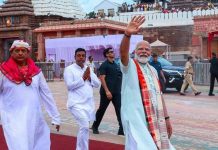When the Ayushman Bharat scheme was announced in Budget 2018, there were sceptics who observed that the scheme would only remain a dream. However, it soon culminated into reality when PM Narendra Modi launched the first phase of the Ayushman Bharat Health Programme from Bijapur in Chhattisgarh in the presence of Chief Minister Raman Singh and Union Health Minister JP Nadda.
Under the Ayushman Bharat Scheme, the government aims to open 1.5 lakh health and wellness centres in the country by 2022, which would be equipped to treat a host of diseases, including blood pressure, diabetes, cancer and old-age illnesses. Also under the scheme, the government has prepared the broad roadmap of the National Health Protection Scheme and work is on to finalise parameters for identifying beneficiaries and hospital entitlement.
Also known as the National Health Protection Scheme, Ayushman Bharat has twin missions – first, creating a network of health and wellness centres to deliver comprehensive primary health care close to the community, and second, providing insurance cover to 40 per cent of India’s population, that is most deprived, for secondary and tertiary care, including, hospitalisation costs. In the second phase of the scheme, a health insurance cover of 500,000 would also be provided to 500 million people across the country.
Ayushman Bharat-National Health Protection Mission will have a defined benefit cover of 5 lakh per family per year. Benefits of the scheme are portable across the country and a beneficiary covered under the scheme will be allowed to take cashless benefits from any public or listed private hospital across the country.
The entitlement-based scheme set to touch 10.74 crore rural families with benefits decided on the basis of deprivation criteria in the Socio-Economic Caste Census (SECC) database. To control the costs, payments for treatment will be done on a package rate (to be defined by the Government in advance) basis.
For giving the policy directions and fostering coordination between Centre and states, it is proposed to set up the Ayushman Bharat National Health Protection Mission Council (AB-NHPMC), chaired by the Union Health and Family Welfare Minister, will manage the scheme at the apex level. States would need to have State Health Agency (SHA) to implement the scheme. Both States and Union Territories (UTs) can implement the scheme through an insurance company, directly through a Trust/ Society or use an integrated mode. To ensure that the funds reach the SHAs on time, the transfer of funds from the Central Government through Ayushman Bharat may be done through an escrow account directly.
Expenditure by Centre/States
The expenditure incurred in premium payment will be shared between States and the Centre. The total expenditure will depend on the actual market-determined premium paid in the States and it will be implemented through insurance companies. In States where the scheme will be implemented in Trust/ Society mode, the Centre’s share of funds will be provided based on actual expenditure or premium ceiling in the pre-determined ratio.
States/districts covered
Ayushman Bharat will be rolled out in all districts across all states and UTs totalling 1.5 lakh Health and Wellness Centres. Besides comprehensive health care, these centres will also provide essential drugs and diagnostic services for free. To begin with, 1200 crore has been earmarked in the 2018 financial year for this programme. The second programme under Ayushman Bharat is National Health Protection Scheme, which is expected to cover over 10 crore families. If implemented as planned, this will be the world’s largest government-funded health care programme.
letters@tehelka.com













